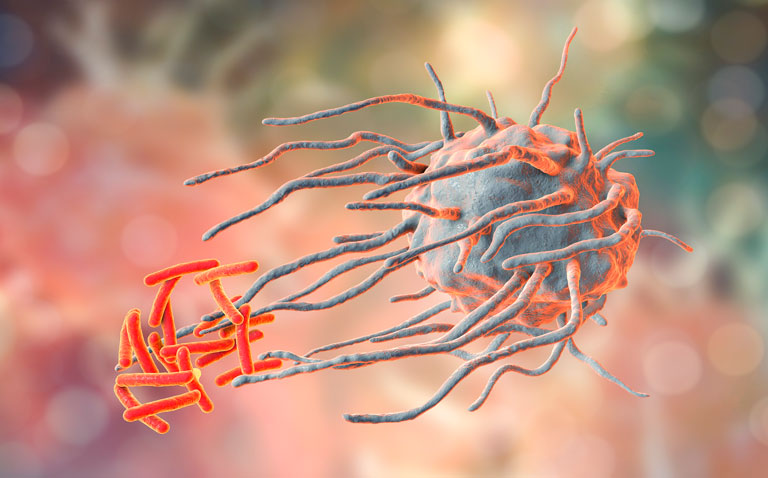Crick and Imperial researchers have found that a key antibiotic widely used to treat drug-resistant tuberculosis does not work as expected – a finding which could be used to develop new drugs.
The study was part-funded by the Francis Crick Institute and the Wellcome Trust in London.
The research, published in Nature Chemical Biology, found that contrary to current understanding, an antibiotic used to treat tuberculosis is unable to permanently prevent one of the enzymes it targets from functioning. By uncovering how this enzyme is re-activated, the research could lead to the development of improved versions of the drug which could be used against antibiotic resistant bacteria.
For more than 50 years, the antibiotic D-cycloserine has been used to treat cases of TB that are resistant to first-line drugs. It had been thought that this drug in part worked by irreversibly preventing an enzyme, alanine racemase, from helping to build TB bacteria’s cell walls.
However, this study found that despite being exposed to D-cycloserine, about 10% of the alanine racemase enzyme was later able to function effectively again. This enzyme is capable of regaining activity by inactivating the drug, in a process called hydrolysis. This change means the modified drug can no longer bind to and block the enzyme.
The drug however can still treat TB because it also inhibits another enzyme involved in building TB cell walls, D-Ala:D-Ala ligase.
“You could say that alanine racemase acts like Dr Jekyll and Mr Hyde. When first exposed to the drug, it’s Dr Jekyll, as it is a good target for the drug, and this stops the bacteria for a time. However, over time it turns into Mr Hyde, as it stops the drug from targeting it and so it can function again. If it weren’t for the drug also blocking a separate target, it would be ineffective against TB,” says Luiz Pedro Carvalho, group leader in the Mycobacterial Metabolism and Antibiotic Research Laboratory at the Crick.
These findings could lead to the development of new drugs. One new route, for example, would be to develop similar molecules that cannot be hydrolysed and therefore would irreversibly inhibit alanine racemase. Various bacteria have the same enzyme or a version of it, so such drugs could provide a new way to treat these diseases.
“For decades, it’s been thought this drug worked in one way, that its action could not be reversed, so it’s rather incredible that we’ve found it gets inactivated by one of its targets,” further explains Luiz Pedro Carvalho. “The fact this has been missed for so long demonstrates how important it is to work with the right protein derived from the organism you want to understand.”
Cesira de Chiara, principal laboratory research scientist in Luiz’s lab, says: “The key here is that tuberculosis takes a relatively long time to replicate, about 20 hours, so there’s enough time for this enzyme to be inhibited and then re-activated. Previous studies missed this re-activation as they haven’t studied the process of inactivation of the enzyme by the drug over such a long period.
“If we could create a tweaked version of this drug that can permanently block this family of enzymes, we could further improve its effectiveness against the raising threat of antibiotic resistant bacteria, perhaps reducing the doses and, with them, the risk of potentially toxic side-effects.”










